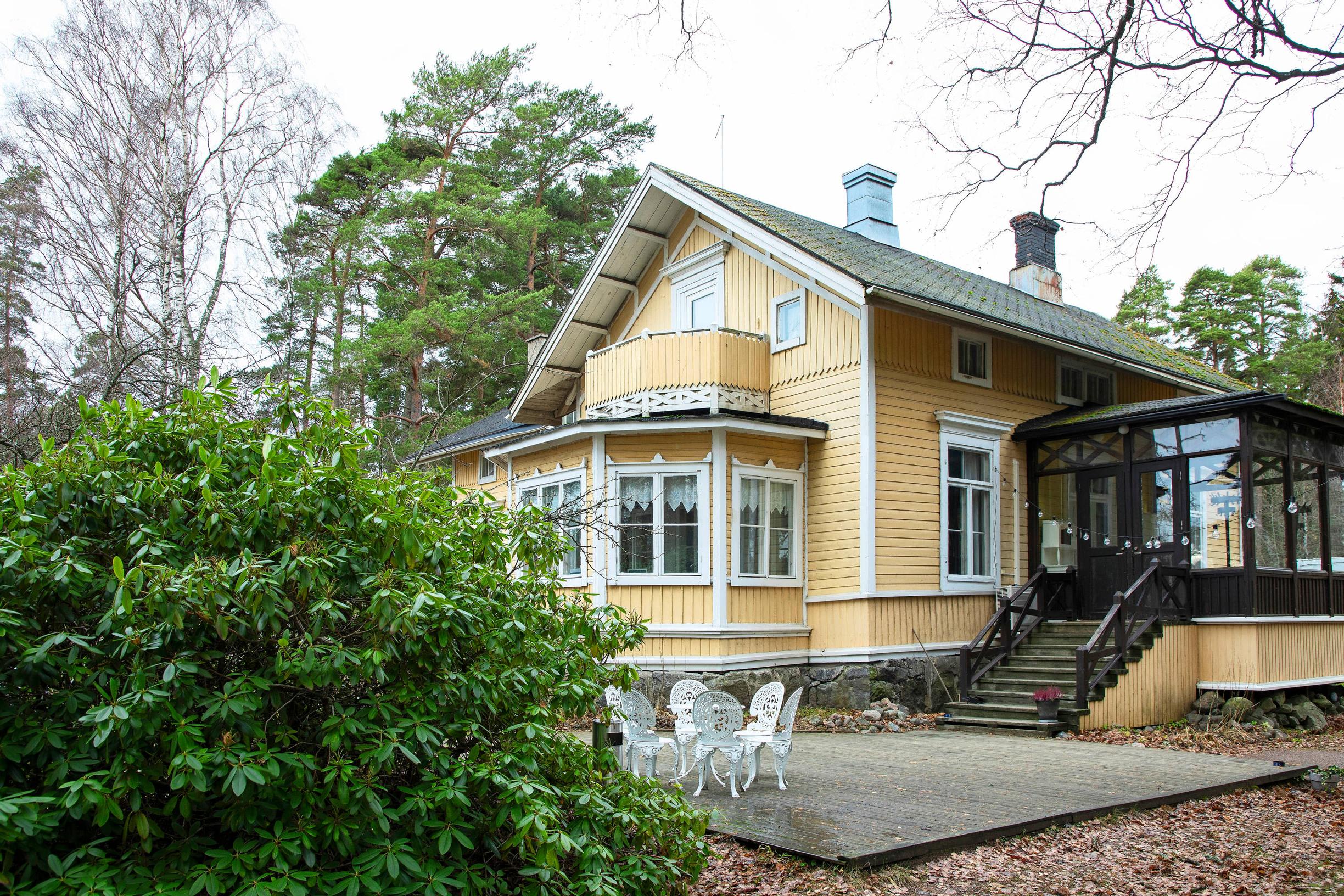
Tea Lindberg breathed new life into a historic villa—“We want to restore its old dignity”
The history behind this Helsinki villa is eventful. Today, the yellow villa and its grounds are overseen by Tea Lindberg, who moved there with her family into the old gatekeeper’s house. The property’s log walls still bear inscriptions from a hundred years ago.
At the end of a sandy road by the shore lie the idyllic grounds of Villa Furuvik, said to be the oldest villa on Helsinki’s Laajasalo islands. Thirteen apple trees rest dormant for the winter. The old utility building, once known as the chicken coop and now the courtyard sauna, sits under a tarp, awaiting its new look. A sea breeze ruffles the pines and birches, and the Gulf of Finland stretches beyond as far as the eye can see.
Next to the old yellow villa stands the third of the original buildings—a red gatekeeper’s house. Today, it belongs to the estate’s owner, entrepreneur Tea Lindberg lives there with her two young children. Tradition remains intact, as the estate caretaker—known in Finnish as pehtooritar— Anni Holmström still lives next door for a short time until she goes on maternity leave. The place has grown so dear to her that just thinking about moving brings tears to her eyes.
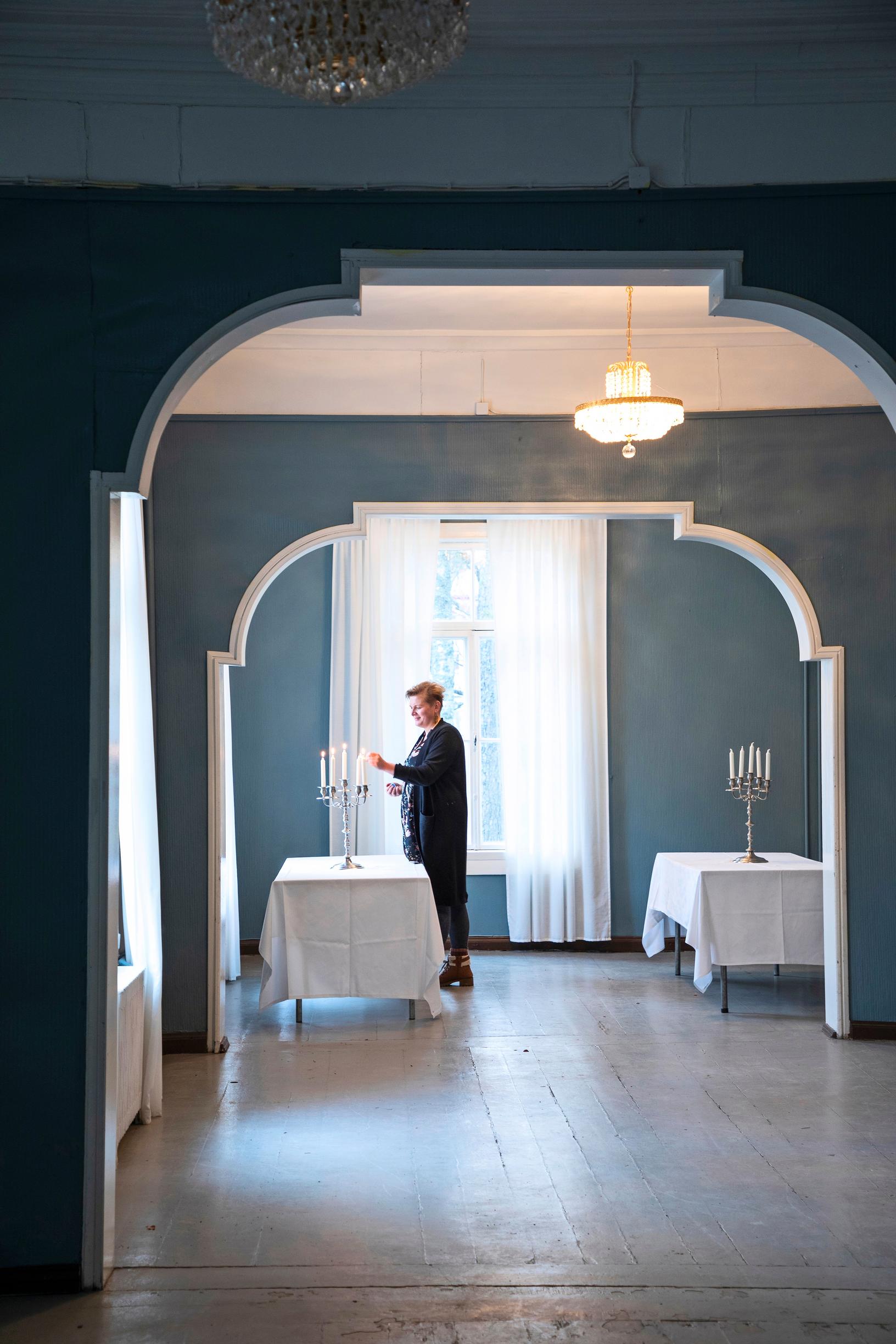
”We don’t hide history or the traces of life; on the contrary, we want to highlight them. A wall can be crooked, and a threshold can be worn.”
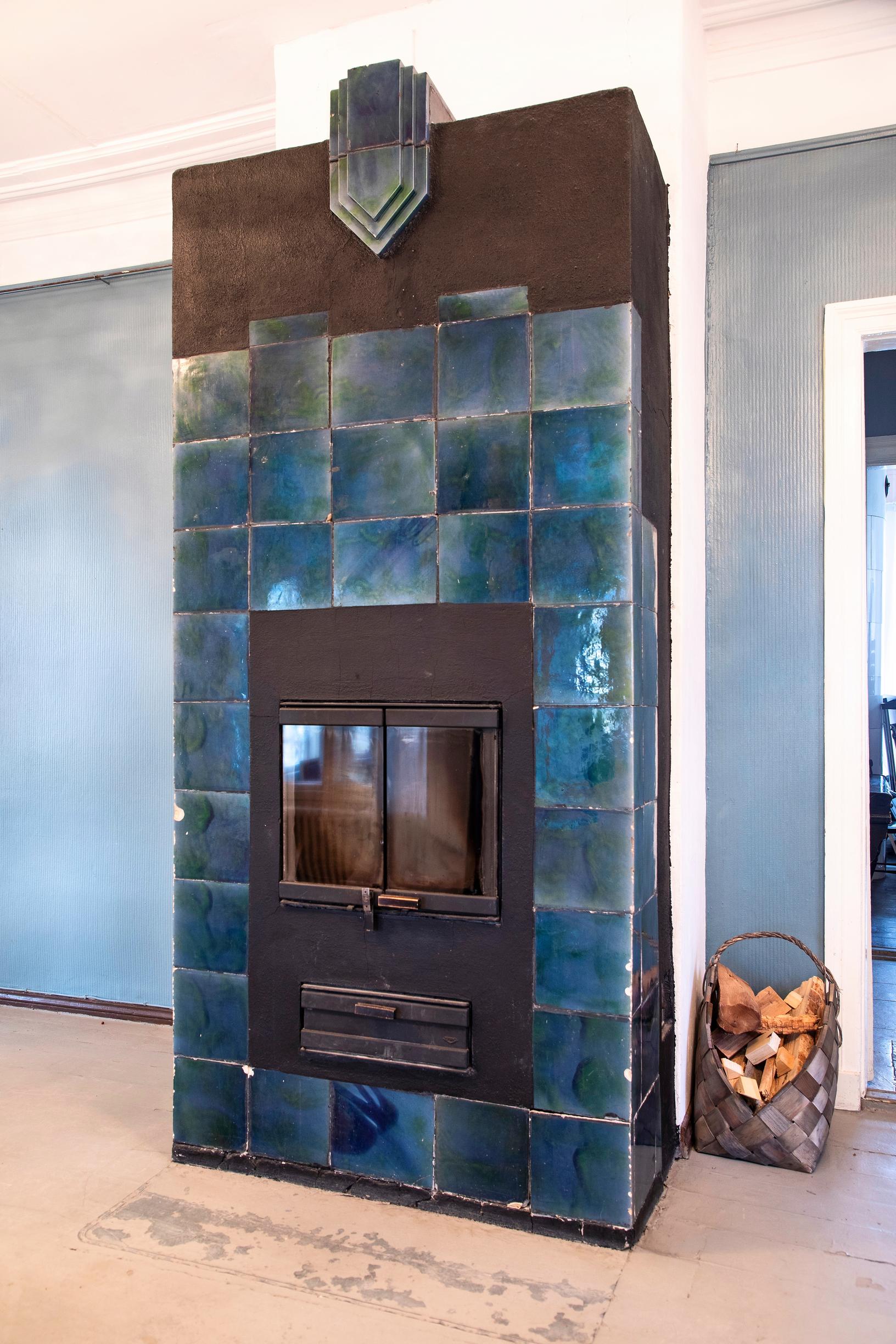
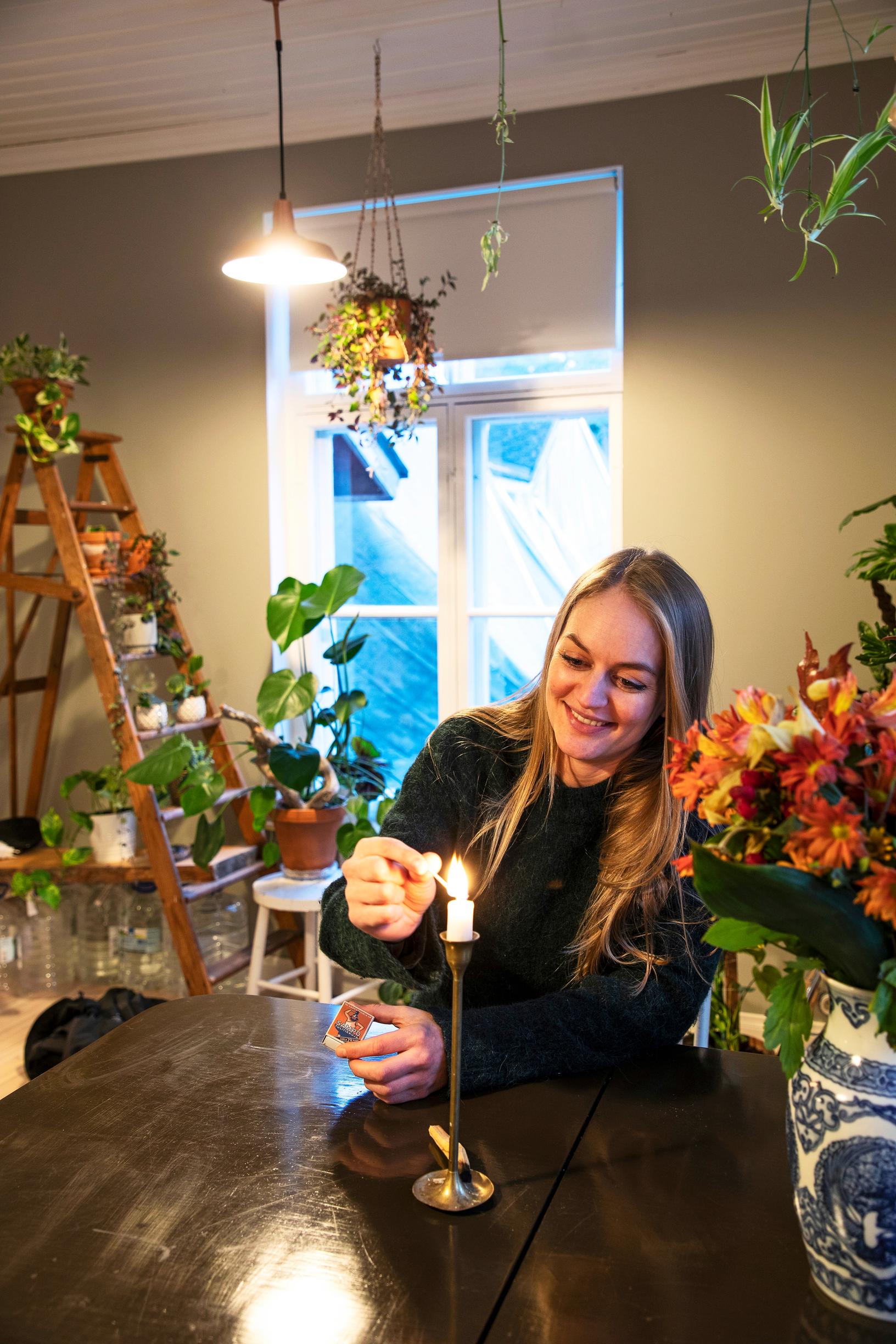
Although Villa Furuvik is privately owned, some areas are semi-public. You can rent the villa, and the beach sauna welcomes visitors year-round. Once a month, there’s an open-house day.
The original buildings are protected for their cultural and environmental value. The grounds themselves also hold notable garden-history importance.
When the City of Helsinki sold Villa Furuvik a couple of years ago—having purchased it in the early 1990s—it found a buyer who is fascinated by the aesthetics and architectural history of old houses.
“Every day, I marvel at this setting. We want to restore its old dignity. We don’t hide history or the traces of life; on the contrary, we want to highlight them. A wall can be crooked, and a threshold can be worn,” Tea says with a laugh.
Anni proudly points out the slanted ceiling in her home, where there’s a 13.5-centimeter difference between two corners.
Tea first crossed paths with Furuvik more than ten years ago, when she catered birthday parties and academic celebrations held in the villa.
”I found the right path to follow. Around here, you often walk around in rubber boots, hair in your eyes, wearing scruffy clothes.”
Originally, Villa Furuvik was planned as a seaside retreat for Tea’s family, just as its original builder E. H. Furuhjelm had intended for his own family. But the calm, rural setting drew them in more and more. For the first year, Tea shuttled between two places, until she decided to rent out the family’s apartment and move. Sometimes she goes a whole week without leaving the island.
“I found the right path to follow. Around here, you often go around in rubber boots, hair in your eyes, wearing clothes. Life feels more authentic—you get a down-to-earth vibe. In the city center, the faster tempo rubs off on you. Here the pace is gentler and the stride is shorter,” Tea notes.
The three-room apartment in the old gatekeeper’s house is under renovation. Four-year-old Elia is thrilled to tear off old wallpaper with his mom and draw on the walls. His little sister, just over a year old, Freia isn’t fazed by the ongoing kitchen remodel. The kids were recently out playing in the protected marshland. The plan is to continue renovating while the family spends Christmas at their warm getaway in Torreblanca, Spain.
Although the atmosphere is cozy and warm, the residents are used to a chill in the air. As a result, the women often overheat when visiting other places, even if most are shivering in sweaters.
In the 1990s, the gatekeeper’s house received a major overhaul after falling into disrepair. Most of the roof was rebuilt, the frame was reinforced, and the external cladding was replaced. The exterior style respects the original design. At about 200 square meters, the house was also divided into two apartments, and a closed connecting door remains as a reminder of the past.
Hints of the villa’s layered history can be found everywhere, though not all of them are positive. Tea was sorry to discover that the plank floors of the late 19th-century home were buried under two layers of plastic flooring.
When renovations started on what is now Anni’s apartment, darkened logs were found beneath silver birch-patterned wallpaper. The dovetail-log framework suggested that at least part of the original log structure had been reused. This means the building could be partially older than the villa itself.
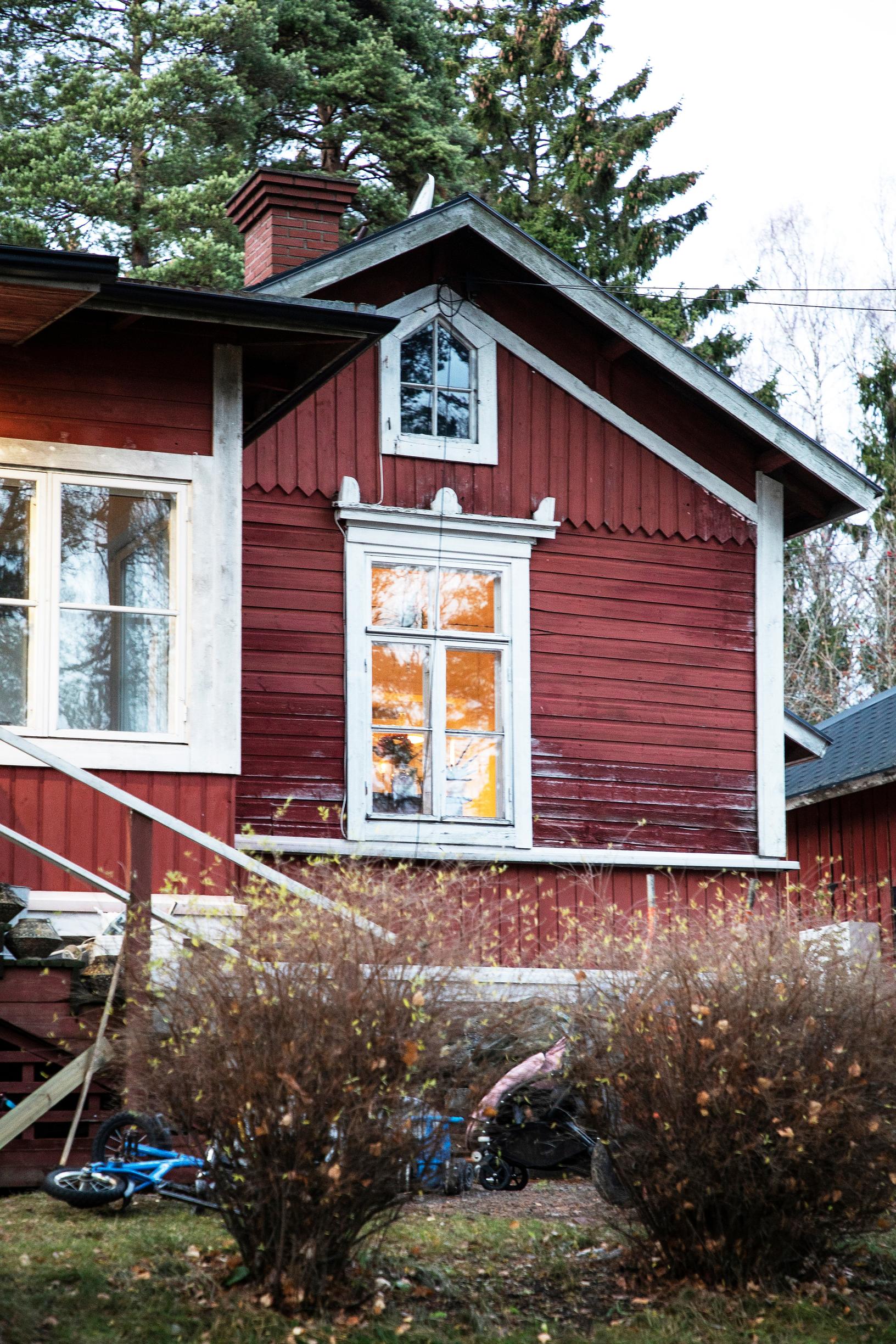
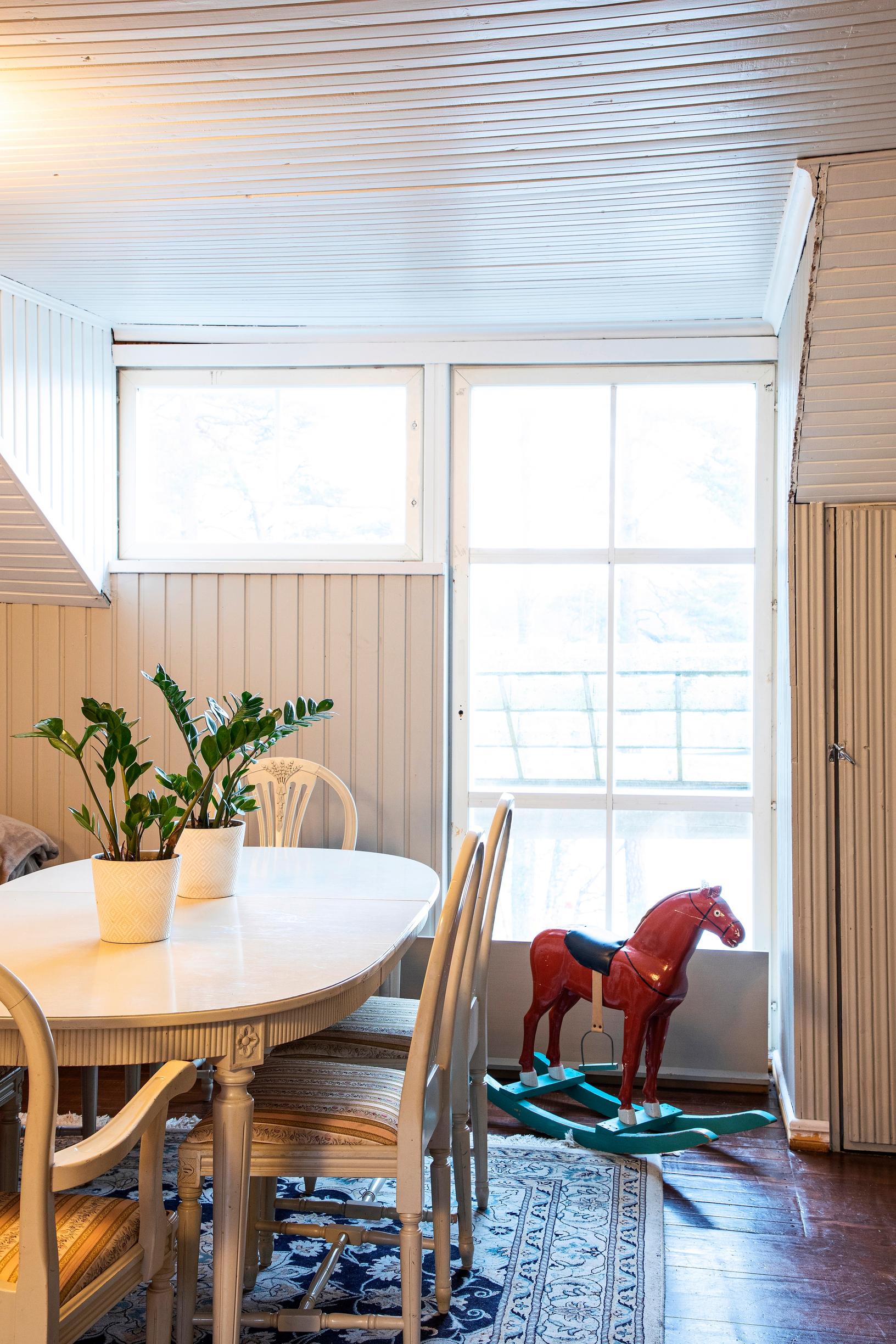
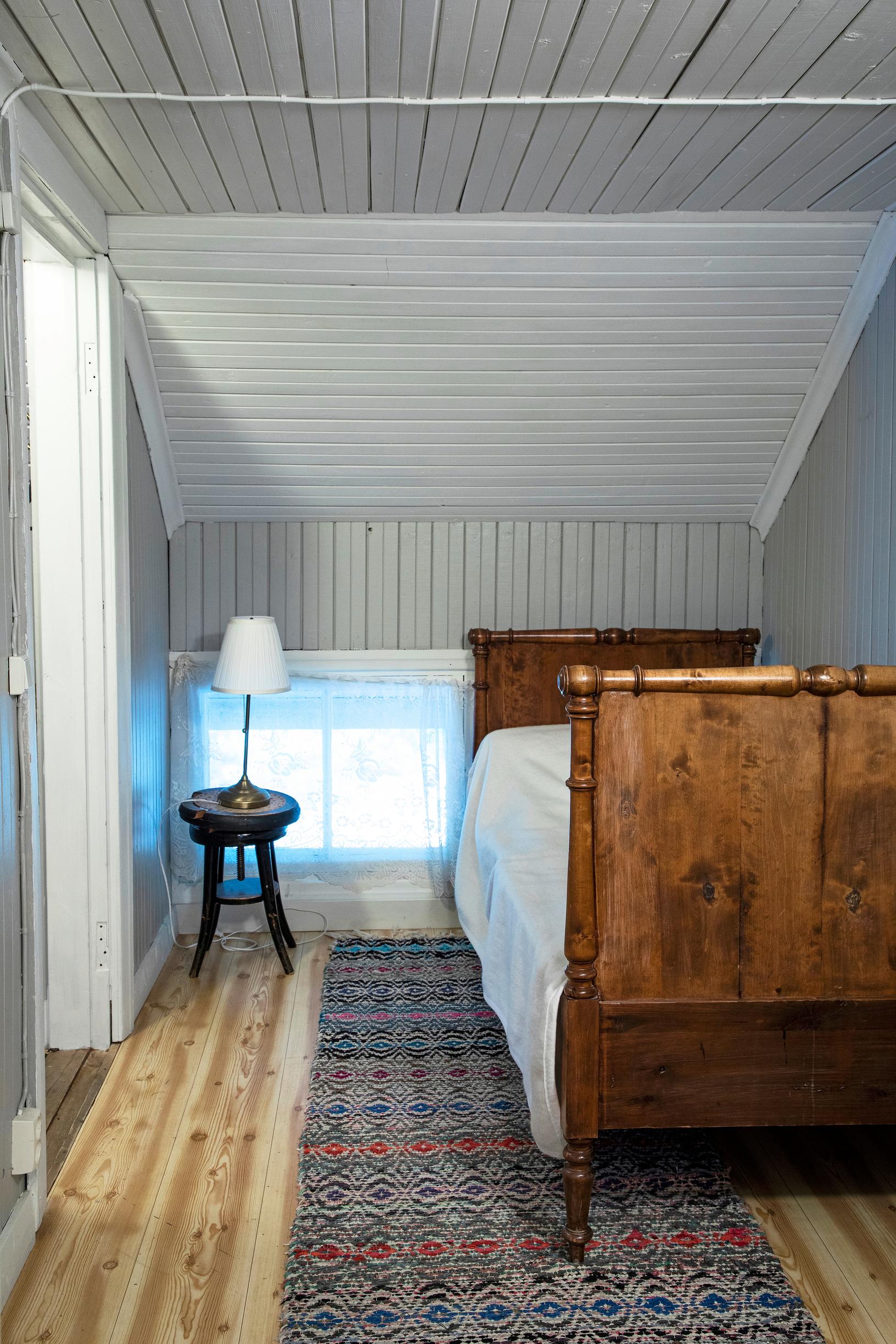
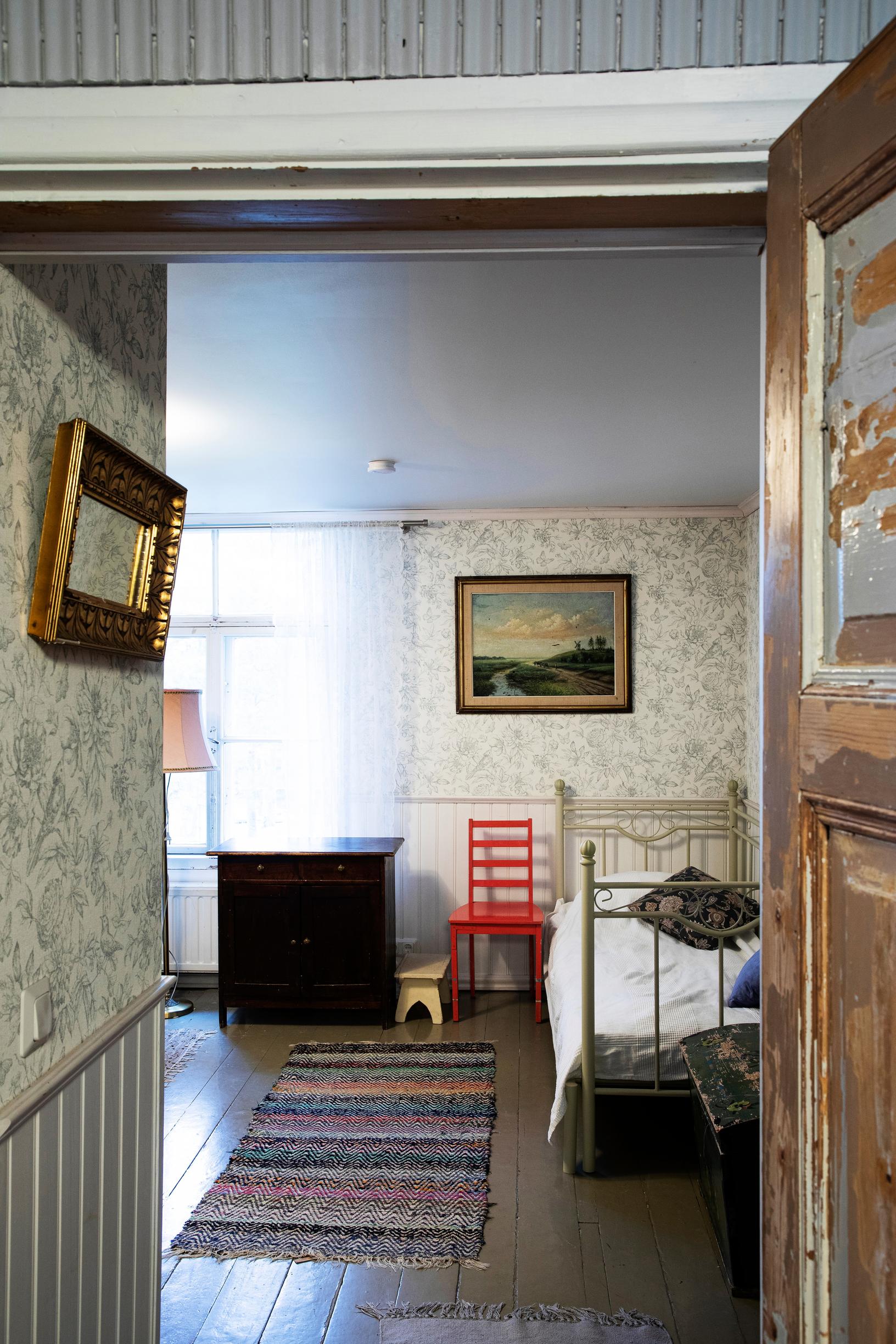
Anni, the pehtooritar, is proud of her title. By chance, a friend messaged her at just the right moment, saying she knew Tea, who needed help with her business for two weeks. Anni figured Tea must be an exceptional person she could learn from.
The job interview turned into a five-hour coffee break, and Anni secured a permanent position. A pehtooritar is a multitasker who welcomes guests, takes care of villa and sauna bookings, and isn’t afraid to grab a screwdriver when needed. Because the house has plenty of quirks, and the job often involves evenings and weekends, Anni ended up moving next to Tea into the newly renovated two-room apartment.
When guests leave, Anni often warms up the sauna for herself and goes for a dip—or simply gazes out at the sea, thinking about the day’s events.
“I’m a country girl at heart, drawn to quieter places. This place is just right. Tea and I are both dreamers, and Furuvik is a way of life for us,” Anni laughs.
The mood is a bit wistful because she’ll soon have to move out. Anni and her Italian partner, whom she met in Lapland, are expecting their first baby early in the year.
Villa Furuvik has stood for more than three decades. The chief of the Mining Office and Member of Parliament, Karl August Wrede, designed summer villas for many wealthy families, weaving in Italian Renaissance and German Gothic styles. Alongside the main villa, a gatekeeper’s house, utility building, root cellar, boathouse, and steamboat pier were built on the property.
It seems the family rented out rooms from the very first summer. Their luck was cut short when Furuhjelm, the villa’s builder, died of a heart attack after just two summers there. When his widow began building a new villa on the neighboring lot, which took on the family name, the old one was fully rented out.
Tragedy struck the family in the early 1900s, when two of Furuhjelm’s five children died in a sailing accident near Villinki.
Pencil marks from former residents have been discovered on the property’s old log walls. One of them, found on the wall of the old utility building—today the courtyard sauna—was apparently made by the caretaker’s son, who was born in 1914. Household maids Olga, Hanna and Alma also etched their names into the logs.
Furuvik stayed within the Furuhjelm family at least into the 1930s, then passed through several owners. Tea bought the villa from the City of Helsinki, which had most recently leased it to the Helsinki-Tallinn Society.
”I’ve only spent one night in the villa—and I picked the room with the quickest escape route, in case any ghosts showed up.”
After finalizing the purchase, Tea wanted to understand life at Furuvik in the past, inviting previous owners to visit. Hearing details about the property was fascinating. The root cellar—now a grilling pavilion—had been dug in an old bomb crater. It used to be an ice cellar, where horses hauled ice blocks for storage.
“Sometimes, on dark, quiet evenings around the property, my imagination goes wild. You can’t help wondering about the lives once lived here,” Anni adds.
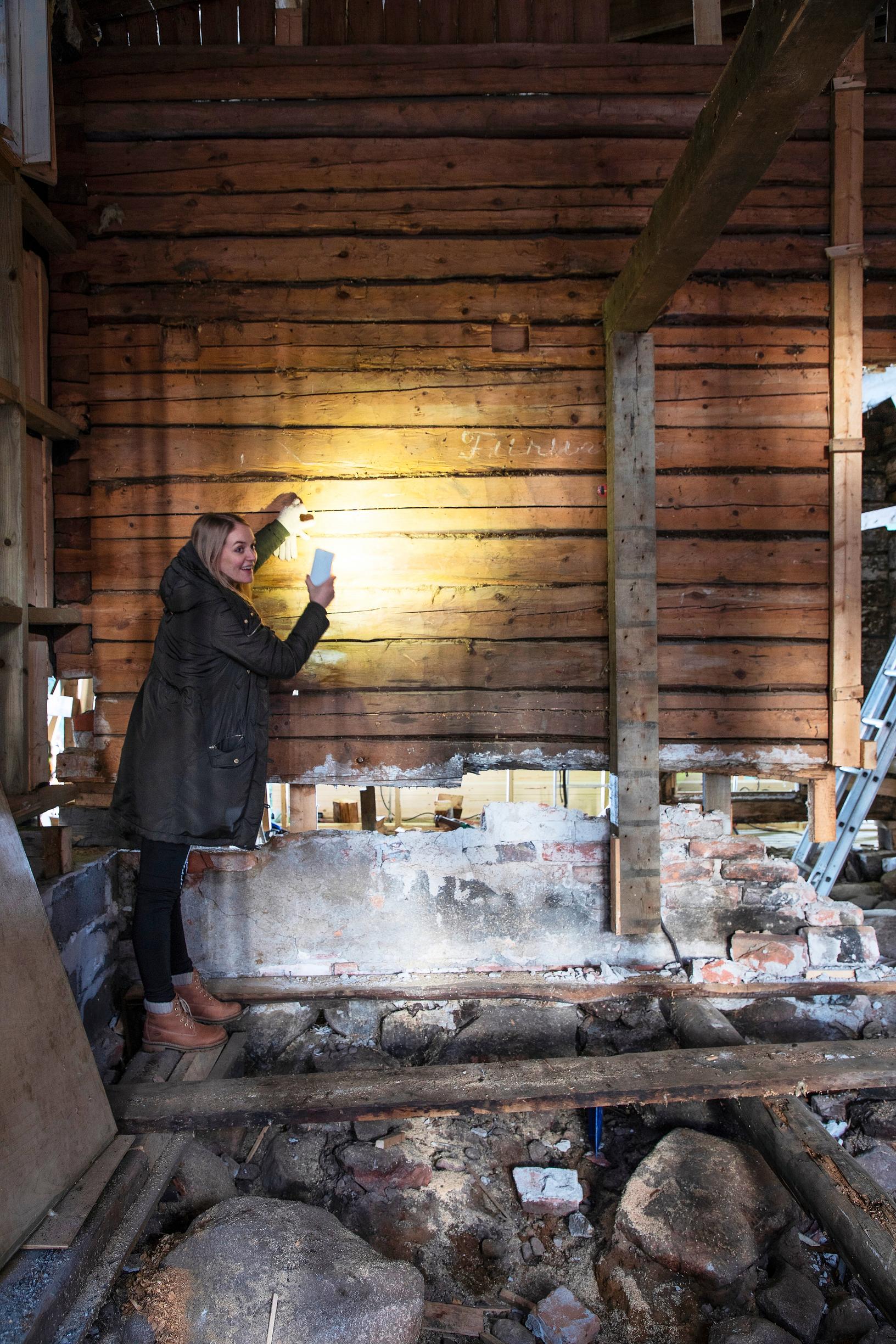
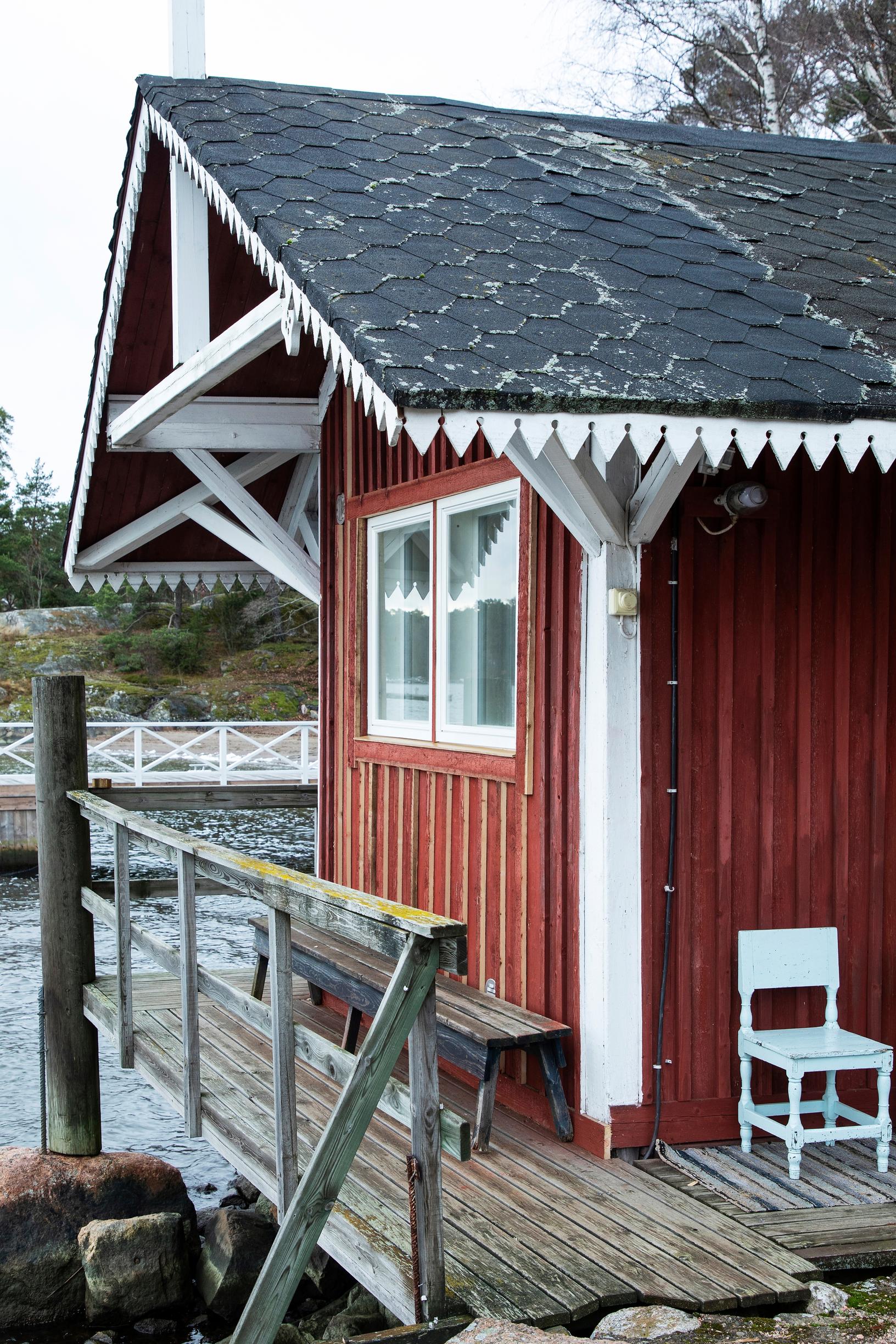
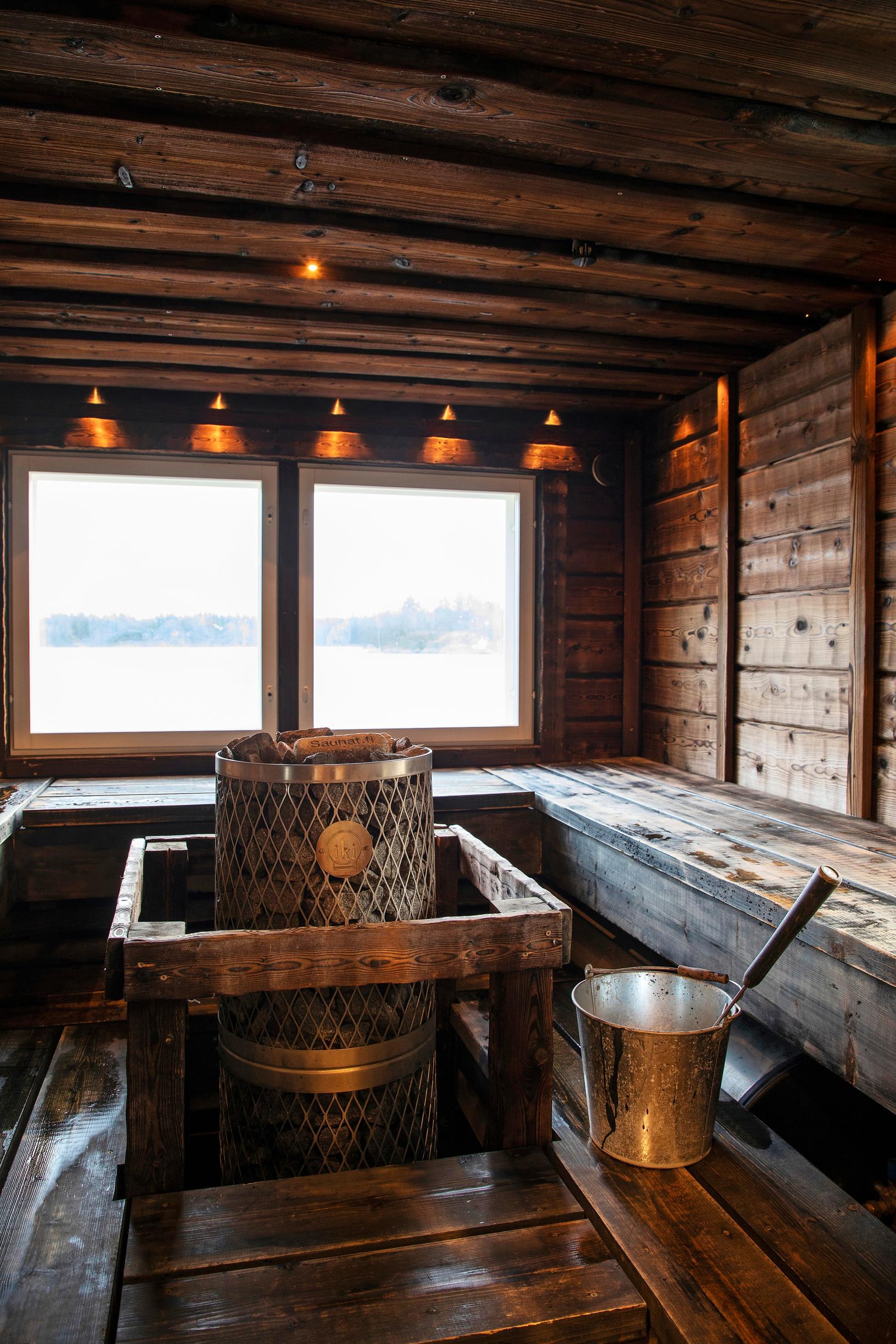

The villa represents the ideals of its era in villa architecture: delicate open eaves, an asymmetrical floor plan and facades, and variation in paneling.
Tea’s favorite spot in the villa is the upstairs suite, with a balcony that directly overlooks the sea.
“I’ve spent just one night in the villa—and I chose the room with the quickest way out in case there were ghosts,” Tea jokes.
The villa’s upper floor has eight rooms, and the villa itself covers around 280 square meters. Downstairs, there’s now a single large hall painted a new shade of blue. Scenes for Taru Mäkelä directed comedy, Täydellinen joulu (A Perfect Christmas), were shot there.
”Many people have stopped by offering to help with yard work, which led us to form a volunteer group.”
Furuvik has taken courage, a dash of craziness, and a willingness to jump right in, because the buildings were far from perfect. But Tea sees the possibilities. Right now, the chimneys are being fixed, gradually bringing back the property’s old vibe.
“You have to accept that everything won’t be done at once, even though I’m itching to keep going. You can sink as much money into it as you have—or want,” Tea sums up.
Everyday life here has surpassed all expectations, because days are never dull. A day feels almost boring if nothing special happens. The yard has seen a fox and, during one corporate event, even an alpaca. One day, a TV crew was filming actor Aku Hirviniemi as someone sprayed his backside with a pressure washer. The spot has become a popular filming location.
A single phone call can change the course of the day because life at Furuvik is lived in the moment. The daily routine is relaxed and communal. Occasionally, passersby are invited in for coffee or to sauna. Many have lent a hand with yard work, sparking the creation of an enthusiastic volunteer group.
“We’re like one big family here,” Tea says.


